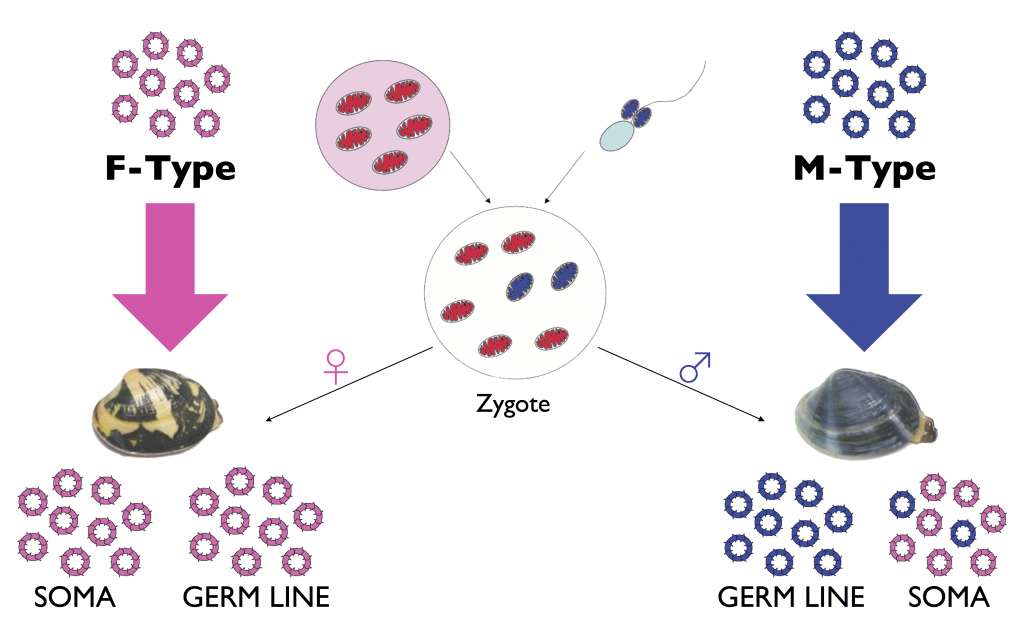Mitogenomics and Mitochondrial Inheritance
Mitochondria are a fundamental component of the eukaryotic cell, not only its primary energy supplier. Nonetheless, available data on their heredity and biogenesis are limited to few model organisms, and largely incomplete. Mitochondria cannot be synthesized de novo, but they divide by fission and are inherited uniparentally. All mitochondria of an individual derive from a small pool of organelles, which is amplified during development. This phenomenon is known as ‘mitochondrial bottleneck‘ and its nature is still a matter of debate: is the organelle sampling under random drift or under selection? And how are mitochondrial multiplication and segregation controlled? No clear answers to these questions are available to date.

This research line is focused on the Doubly Uniparental Inheritance (DUI) of mitochondria, an unusual inheritance system that has been reported on ~50 species of bivalve molluscs. DUI organisms have two mitochondrial lineages, one transmitted through eggs (F-type), the other through sperm (M-type): the sequence divergence between conspecific M and F mtDNAs ranges from 20 to 40%. In DUI species, after amphimixis, the embryo is heteroplasmic for its mtDNA, a status that is eventually maintained only in males, where M-mtDNA localizes in the gonad and F-mtDNA in somatic tissues. Conversely, in females M-mtDNA disappears, restoring the homoplasmic condition. In male embryos the aggregate of M mitochondria coming from the spermatozoon first localizes at the center of the first cleavage furrow, then reaches the 4d blastomere, from which the gonad is formed, suggesting a non-random segregation. In female embryos, instead, M mitochondria are dispersed among blastomeres and diluted or degraded. There is both molecular and phylogenetic evidence that DUI evolved as a modification of a mechanism of maternal inheritance, typical of all Metazoa.
By its nature, DUI offers a privileged model system for simple and cheap experiments to gather precious information about fundamental, but still unknown, functions of mitochondria. Our work aims at expanding the background knowledge we have about DUI to make it a model for mitochondrial biology. In particular, the DUI male represents an unique experimental system: the coexistence in the same organism of two very divergent mtDNAs with different functions and interactions with the nuclear genome and cellular components (e.g cytoskeleton and germ line components), allows for experiments that would not be possible in other organisms. For example, in order to study the effects of heteroplasmy and its role in mitochondrial diseases, it is usually necessary to generate cybrids (i.e. cytoplasmic hybrids) or inbred heteroplasmic mutants. These models are extremely useful, but their heteroplasmy is an artificial condition, while in the DUI male it is natural, therefore the biological functions and interactions between nucleus and mitochondria are the unaltered result of evolution. Among those interactions, of particular interest is the relationship between two processes that shape the evolution of genomes: genomic conflicts and coevolution between nuclear and mitochondrial genes. There is no biological system more suitable that DUI to study that.
